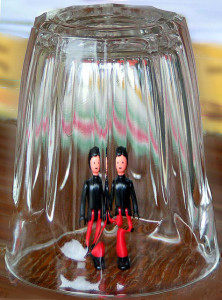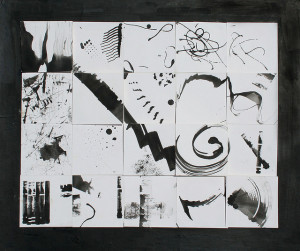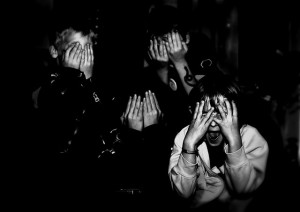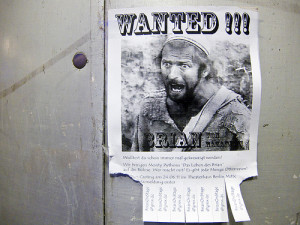
Trapped by art! CC image Help! courtesy of fisserman on Flickr. Some rights reserved.
For those of you who saw my last post about submitting (sending out our work to be judged… I mean, for consideration to be published or made public), the topic clearly has more to offer. For one, we didn’t talk about actually making the art.
(Yes, I do things backwards sometimes.)
We think about our art in relation to other people. We want to share our work (at some point). We want to know what other people think (nice things). We think about it being finished.
Every time I think about submitting my work, I feel a mental nod coming on. Yes, that’s a good idea. I should. I want to.
After all, that’s how people are going to read it, right?
Right.
Followed by more irrefutable logic: I will never be published [by anyone other than myself] if I don’t ever submit my work.
Once I sit down to actually, physically take on the task of submission, a lot changes.
I’m not nodding anymore. I’m fighting.
Resistance, in fact, sweeps over me like a hurricane. The winds lash me, the rains drench me, I’m afraid I’m about to be swept away. The best I can do is hunker down and wait for the storm to subside. Then I walk around gingerly, on tip toe, for a while. I don’t want to rouse the demons yet again.
Sound familiar?
Submitting and writing are not the same thing
Art first needs to be made. This submission concept is really frou-frou, like frosting on brownies. Before the frosting can go anywhere, we need to bake brownies. Then we can agonize about what flavor frosting we want.
The act of making the piece, or even editing the piece, is separate from the submission storm, although the storm does bring up writing debris.
The making brings up its own resistance.
Say I am not even thinking about making a submission. I am working on a first draft. Better yet, I’ve just had an idea, and am running down the track after my idea, trying to determine what species it is, what habitat it likes, whether the idea wants the shade or a river, what it likes to eat, and if it prefers the pen or the computer. Even here, I have to deal with a storm of resistance. And dealing with resistance here is much more of a dicey proposition than at the submission stage. If I wrestle too much at the source, I’ll be distracted with my struggle while the idea gets away.
Hop-hop-hop. Nothing doing. Do you know this dance?
Resistance is everywhere
The siren voices of resistance at the writing stage are the usual menagerie of rabid self-judgments. A selection: This is awful. Where is this going? You can’t say that… So-and-so [famous, published and wealthy] would never say that. So-and-so is better than you. That’s why So-and-so is published, and you’re not.
Sometimes the eye-rolling pedant in me gets a word in edgewise. Example: I also won’t get published if I never WRITE anything until the end…
Storm voice: Maybe that’s the way it should be. No one wants to read drivel.
Then there is the distraction ploy. For example: I’m hungry. My ankle itches. Listen, I haven’t done laundry in a week and I’m running out of socks.
Finally, lest we forget, there is resistance posing as the voice of logic. Actually, this isn’t the best time to be doing this (writing). You should prep for that meeting. Or wash your hair. This isn’t a quiet spot. You’re going to be interrupted. What a waste of your flow! You’ll get started and then disturbed right at the crucial moment. What about going somewhere else? You should choose a quieter time of day. You should choose a more secluded location. You should sit in a chair that doesn’t turn you into the Hunchback of Notre Dame.
Dear Reader, do you recognize this mess? Do you feel familiar with the scenarios I have just sketched for you? Fear not — I have a diagnosis. The sickness is this:
You aren’t submitting (to your art).
I am not submitting (to my art).
And we must, or we’re never going to be happy. Screw fame, publication, and wealth. Let’s back up to the first step. We’re never going to get out of this loony bin the way we’re going. We are bouncing off the walls: look at us!
This is important— no matter what else we do, we must always, always, always submit to our art.
== == ==
What happens when you don’t submit?






